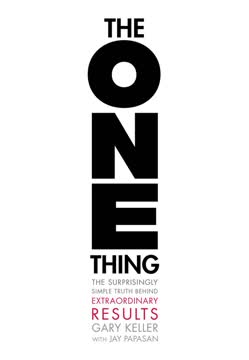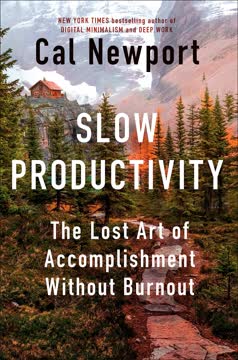重点摘要
1. 低谷期:拥抱挑战,迈向非凡成功
“低谷期是从起步到精通之间的漫长跋涉。虽然漫长,却是捷径,因为它比任何其他路径都能更快带你抵达目标。”
低谷期不可避免。它是开始一项事业到达精通之间的艰难阶段。正是这段时期区分了真正投入者与浅尝辄止者,制造了稀缺性和价值。低谷期的例子包括:
- 医学生必须攻克的有机化学
- 创业初期市场尚未认可的艰辛
- 精通乐器或体育运动的磨炼
把低谷期视为机遇。那些坚持下来的人往往成为领域的领军人物。低谷的难度构筑了门槛,确保只有最专注的人才能成功,这种稀缺性也带来了市场价值。
识别不同类型的低谷期:
- 生产低谷:扩大产能的挑战
- 销售低谷:打造专业销售团队的磨合
- 学习低谷:投入时间掌握新技能
- 风险低谷:为成长承担财务风险
- 关系低谷:在困难时刻建立人脉
2. 战略性放弃:舍弃死胡同,坚持穿越低谷
“放弃往往是一种明智策略,是管理生活和职业的聪明方式。但有时,放弃恰恰是错误的选择。”
战略性放弃至关重要。它关乎辨别哪些机会值得追求,哪些则是无路可走。明智地放弃能释放资源,投入更有前景的事业。
识别并放弃死胡同。死胡同是指持续努力却毫无进展的境地。例子包括:
- 没有成长空间的死板工作
- 处于衰退市场的企业
- 无改善迹象的关系
坚持穿越有价值的低谷。当面对通往有意义目标的挑战时,要坚持到底。区分低谷与死胡同的能力,是成功的关键。
3. 成为你领域的佼佼者:卓越造就稀缺与价值
“‘最好’是指:在他们眼中、基于他们的认知和需求,你是当下最合适的。‘领域’是指:他们所处的世界,你所能触及的范围。”
战略性地定义你的领域。你的“领域”可以是细分市场、特定技能或特定受众。在明确的领域中成为最优秀者,创造稀缺性和价值。
卓越带来不成比例的回报。在许多领域,顶尖表现者获得的利益远超一般人。这种“赢家通吃”的现象体现在:
- 商业:市场领导者主导行业
- 娱乐:顶级艺术家收取高额报酬
- 体育:冠军运动员获得大部分赞助和关注
持续提升技能。要成为并保持最佳,必须不断改进,适应市场变化。
4. 识别死胡同:避免停滞与平庸
“死胡同(法语意为‘死路’)简单到不需要图表。它是你不断努力却毫无变化的状态。”
及早识别死胡同。死胡同是指额外付出不带来实质进步的情形。快速识别能节省宝贵时间和资源。
常见死胡同包括:
- 饱和市场中无独特价值的企业
- 缺乏成长潜力的职业
- 已陷入停滞的关系
及时脱离死胡同。停留在死胡同的机会成本极高,每一刻浪费的时间都是未投入潜在回报事业的时间。
5. 短期痛苦,长期收益:超越低谷,展望成功
“短期痛苦对大多数人的影响远大于长期利益,这就是为何你必须放大不放弃的长期收益。”
聚焦长期回报。穿越低谷的痛苦常常掩盖潜在利益。主动想象并提醒自己,成功就在前方。
保持长期视角的技巧:
- 设定明确且可衡量的目标
- 定期跟踪进展
- 庆祝每一个小胜利
- 从成功者身上汲取灵感
将痛苦转化为动力。把低谷的挑战视为通往终极目标的必经之路,这种心态转变能将障碍变为成长和差异化的机会。
6. 重新投入,而非仅仅坚持:积极应对问题
“放弃的反义词不是‘等待’,而是重新投入。放弃的反义词是充满活力的新策略,旨在拆解问题。”
重新投入即主动坚持。不要被动忍受低谷,而是以焕然一新的能量和创造力面对它。这种积极态度能缩短低谷期或使其更易应对。
重新投入的策略:
- 定期评估并优化方法
- 寻求导师或专家的新视角和建议
- 投资技能提升,更有效应对挑战
- 将大问题拆解为小任务逐步解决
勇于承担经过计算的风险。面对重大低谷时,考虑大胆举措,可能彻底改变轨迹。低谷的痛苦可成为创新思维和勇敢行动的催化剂。
7. 放弃不是失败:战略性放弃通向成功
“战略性放弃是成功组织的秘密。反应性放弃和频繁放弃则是那些努力却失败者的祸根。”
区分放弃与失败。战略性放弃是基于深思熟虑的决策;失败则是未考虑替代方案或耗尽资源仍无进展的放弃。
战略性放弃的好处:
- 释放资源投入更有前景的机会
- 防止倦怠,保持动力
- 便于快速应对市场变化调整方向
避免反应性和频繁放弃。因暂时挫折冲动放弃,或频繁跳槽却不坚持到底,容易形成失败模式。
8. 克服自尊:学会何时放手
“自尊是聪明放弃者的敌人。”
识别自尊何时阻碍进步。仅为面子坚持项目或职业,代价是时间、资源和错失良机。
自尊影响决策的迹象:
- 明知是死胡同却为继续努力找借口
- 拒绝承认错误或改变方向
- 与他人比较而非专注自我成长
将放弃视为力量。把放弃无效事业看作智慧和战略思维的体现,而非软弱。
9. 放弃前的三大问题:恐慌、影响力与进展
“最优秀的放弃者,是那些提前决定何时放弃的人。”
问题一:我是在恐慌吗?避免在高压或情绪激动时做出放弃决定。应在冷静时规划退出策略。
问题二:我想影响谁?
- 影响个人:坚持有界限,知道何时停止。
- 影响市场:需要更多耐心和持续努力。
问题三:我取得了什么可衡量的进展?
- 明确具体、量化的进步指标。
- 若持续努力无进展,或许该放弃。
建立放弃框架:在进入重大事业前,设定清晰的坚持与放弃标准,确保决策基于战略而非情绪。
最后更新日期:
FAQ
What's "The Dip" about?
- Author and Purpose: "The Dip" by Seth Godin is a guide to understanding when to quit and when to persevere in various aspects of life and business.
- Concept of The Dip: It introduces the concept of 'The Dip,' a temporary setback that can lead to success if navigated correctly.
- Quitting vs. Persevering: The book emphasizes strategic quitting and sticking with the right pursuits to become the best in the world.
- Target Audience: It's aimed at high-achieving, goal-oriented individuals who face obstacles and need guidance on when to push through or pivot.
Why should I read "The Dip"?
- Decision-Making Tool: It provides a framework for making informed decisions about quitting or persevering.
- Improves Focus: Helps readers focus their efforts on pursuits that have the potential for significant rewards.
- Strategic Advantage: Offers insights into gaining a competitive edge by understanding market dynamics and personal limits.
- Practical Advice: The book is concise and filled with practical advice applicable to personal and professional life.
What are the key takeaways of "The Dip"?
- Understanding The Dip: Recognize that The Dip is a natural part of any challenging endeavor and can lead to success if navigated properly.
- Strategic Quitting: Learn to quit the right things at the right time to focus resources on more promising opportunities.
- Scarcity and Value: Understand that scarcity created by The Dip increases the value of being the best in the world.
- Persistence and Success: Success often comes to those who can push through The Dip and emerge on the other side.
What is "The Dip" according to Seth Godin?
- Definition: The Dip is the long slog between starting something and mastering it, where many people give up.
- Shortcut to Success: It acts as a shortcut because it filters out those not willing to persevere, leaving more room for those who do.
- Barrier to Entry: The Dip creates a barrier that, once overcome, leads to significant rewards and market leadership.
- Strategic Importance: Recognizing and navigating The Dip is crucial for achieving extraordinary success.
How does Seth Godin define quitting in "The Dip"?
- Strategic Quitting: Quitting is not a failure but a strategic decision to stop pursuing something that isn't working.
- Avoiding Mediocrity: Quitting allows individuals to avoid mediocrity and focus on areas where they can excel.
- Resource Allocation: It frees up time and resources to invest in more promising opportunities.
- Timing Matters: The key is to quit before investing too much in a dead-end path, not during a moment of panic.
What are the different curves discussed in "The Dip"?
- The Dip: A temporary setback that, if overcome, leads to success and scarcity-driven value.
- The Cul-de-Sac: A dead-end situation where no amount of effort will lead to improvement; quitting is advised.
- The Cliff: A situation where continuing leads to a sudden drop-off or failure; recognizing it early is crucial.
- Strategic Navigation: Understanding these curves helps in making informed decisions about when to quit or persevere.
What is the significance of being "the best in the world" in "The Dip"?
- Market Rewards: Being the best in the world leads to disproportionate rewards compared to being average.
- Scarcity and Demand: Scarcity created by The Dip increases demand for those who are the best.
- Subjective Best: "Best" is subjective and defined by the consumer's needs and preferences.
- Focus and Specialization: Achieving this status requires focus, specialization, and the ability to navigate The Dip.
How does "The Dip" relate to market dynamics?
- Scarcity Creates Value: The Dip creates scarcity, which in turn increases the value of being the best.
- Market Leadership: Successfully navigating The Dip can lead to market leadership and significant competitive advantages.
- Consumer Behavior: Consumers prefer the best option available, which is why being number one is crucial.
- Strategic Positioning: Understanding market dynamics helps in positioning oneself or a product as the best in the world.
What are some practical applications of "The Dip"?
- Career Decisions: Use the concepts to decide when to quit a job or pursue a new opportunity.
- Business Strategy: Apply the principles to focus on products or services that can become market leaders.
- Personal Goals: Evaluate personal projects or hobbies to determine if they are worth pursuing through The Dip.
- Resource Management: Allocate resources effectively by quitting pursuits that are unlikely to succeed.
What are the best quotes from "The Dip" and what do they mean?
- "Winners quit all the time. They just quit the right stuff at the right time." This emphasizes the importance of strategic quitting.
- "The Dip is the reason you’re here." It highlights that overcoming challenges is essential for achieving success.
- "Average is for losers." This quote underscores the book's message that mediocrity is not a path to success.
- "If you’re not going to get to #1, you might as well quit now." It stresses the importance of focusing efforts on becoming the best.
How does "The Dip" address the fear of quitting?
- Quitting as Strategy: It reframes quitting as a strategic decision rather than a failure.
- Overcoming Pride: Encourages overcoming pride and ego to make rational decisions about quitting.
- Long-term Focus: Emphasizes the importance of focusing on long-term goals rather than short-term discomfort.
- Empowerment: Provides a sense of empowerment by encouraging readers to quit pursuits that don't align with their goals.
How can "The Dip" help in personal development?
- Self-Assessment: Encourages self-assessment to determine which pursuits are worth continuing.
- Goal Alignment: Helps align personal goals with actions by focusing on areas with the potential for success.
- Skill Mastery: Promotes the idea of mastering skills by persevering through The Dip.
- Resource Optimization: Guides individuals in optimizing their time and resources by quitting unproductive endeavors.
评论
《低谷》这本书评价不一,有人赞赏其简洁而有力的观点,强调战略性放弃与坚持的重要性。许多读者认为,书中关于如何度过艰难时期以实现成功的理念颇具价值。然而,也有批评声音指出,书中内容重复,且对复杂决策的阐述过于简化。一些人不同意书中强调在某一领域成为最优秀的观点,认为这忽视了个人的乐趣与成长。尽管篇幅短小,读者普遍认可书中关于识别何时放弃、何时坚持的核心思想。
Similar Books






















